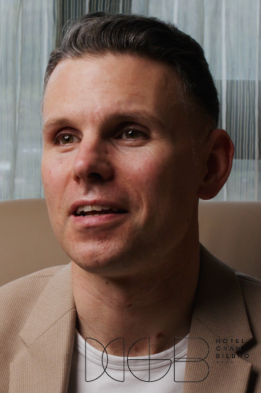What is a transient business traveller?
Transient business travellers are guests who are predominantly on-the-move and seek short (and often urgent!) hotel stays, like business people who travel during the week. Corporate transient travel occurs when a person travels interstate or internationally to represent their place of work.
Such guests are usually not looking for anything more than a basic service: a clean and comfortable room for the night, and a nice breakfast in the morning. Normally, rooms with a bath/shower, telephone and TV usually suffice (i.e. rather than suites etc.) for customers, with some overnight-staying guests possibly wishing to take advantage of some available in-house hotel services, such as laundry and pressing.
With companies of all types becoming increasingly globally connected, most industries engage in some sort of business travel. The industries that spend the most on transient travel include:
- Food processing and services
- Real estate
- Professional and business services
- Personal and social services
- Transportation services
- Government
- Wholesale trade
- Construction
- Rubber and plastic manufacturing
- Communication services
Reasons for trips are often to attend a conference, speak at a summit, discuss deals with partners, inspect a worksite, foster relationships, or establish new business opportunities.
Depending on the size of the company the transient traveller will either book their transport and accommodation themselves, usually via online travel agents and hotel/travel websites – and organise their own itinerary – or their company will do so on their behalf through travel agents and global distribution systems.
It’s very common for business travellers to travel back to many of the same destinations each year or multiple times during the year.
The frequency, duration, and expenditure of these corporate trips – as well as the behaviour displayed by the guest – will be impacted by the particular industry, gender, age, and personal preference of the transient traveller.
Table of contents
Why travel safety is important to business travellers
There are few travellers that don’t care about safety along their trip, and even fewer transient business travellers that don’t prioritise their own wellbeing. While ensuring that guests feel safe during their stay with you may seem like a no-brainer, there are even more benefits to ensuring this kind of atmosphere for securing business travellers.
For business travellers, safety is not just a preference, it’s a necessity. Travelling for work can be stressful, and concerns about personal safety can significantly add to this stress. Ensuring a safe environment is essential for their mental and physical well-being.
Not only that, but when safety concerns are alleviated, business travellers can focus better on their work commitments. Safe environments foster a sense of security, enabling them to concentrate on meetings and work tasks without distraction.
Furthermore, companies have a duty of care to ensure the safety of their employees while travelling. This extends to choosing accommodations that are known for their stringent safety standards.
Employee safety is crucial, but so is the safety of any equipment and/or data that the employee brings with them. Theft, accidental damage, or loss of a company laptop, for example, is a fast (and unfortunately common) way to turn a business trip into a disaster.
Lastly, but importantly, in the wake of the pandemic, safety has taken on a new dimension, encompassing not just physical security but also health safety. Hotels that adapt to these changing needs, by implementing rigorous cleanliness protocols and health safety measures, will be more appealing to the health-conscious business traveller.
Appeal to business guests around the globe with SiteMinder With access to hundreds of booking channels, instant listing updates, and fully streamlined online booking features, SiteMinder is built to help you secure more bookings from businesses and their staff.
What do business travellers want in a hotel?
While every business traveller is different, there are consistent themes that practically anyone travelling on business will be looking for in a hotel.
Convenient location
Business travellers prioritise location above all. They seek hotels that are strategically located near business districts, airports, or conference centres. A convenient location saves time and reduces travel-related stress, a key consideration for those on tight schedules.
Flexible booking
Flexibility is crucial for business travellers whose plans may change at the last minute. They appreciate hotels offering flexible booking policies, including easy cancellations and modifications.
Efficient check in process
Time is of the essence for business travellers. An efficient check-in process, preferably with options for online check-in, is a significant advantage. This streamlined service not only saves time but also enhances the overall guest experience.
Business amenities
Essential business amenities, such as high-speed internet, work desks in rooms, meeting facilities, and business centres, are non-negotiable. Hotels equipped with these facilities can greatly increase their appeal to business travellers.
Personalisation
Personalised experiences make business travellers feel valued. This can range from customised room settings to tailored services like preferred newspaper delivery or wake-up call timings. The key here is to use in-depth data analytics and potentially even artificial intelligence to inform who wants what, when, and in what format.

How to attract business travellers
Your audience is unique and will be appealed to in a unique way, but every hotel can benefit from applying some (or all!) of the below tips to appeal to business travellers:
Tip 1: Understand what business travellers want during their hotel stay
While leisure travellers may be looking for luxury, business travellers are more focused on convenience and efficiency.
To attract business travellers to your property, make sure you offer the amenities that they desire.
- Business travellers spend more than 16 hours per day connected to WiFi Internet, according to Leonardo, and they expect it to be available at hotels. If they have to pay extra for it, they will, because they need it to complete their work.
- They’ll probably have more than one device that they’re working with. Make sure there are at least four plug outlets in each room, situated near the bed and desk areas.
- An iron and ironing board would be useful for those who need to look sharp before rushing off to meetings.
- Many business travellers don’t want to give up their fitness routines while travelling. If your hotel has a fitness centre, then that’s a definite plus.
Tip 2: Create a pricing strategy aimed at business travellers
To create a pricing strategy aimed at business travellers, you’ll need to identify them first.
So use your property management system’s customer data to segment your guest database. Then, take note of any trends you notice – like length of stay (LOS), lead time, and booking channel.
When you combine those trends with your seasonal pricing changes, you’ll be able to develop a pricing strategy that pushes the needle.
As a general rule of thumb, business travellers are not as sensitive to rate changes and pricing because their companies are compensating for their travel.
Tip 3: Create a loyalty program aimed at business travellers
Business travellers are looking for loyalty programs that provide them with useful rewards.
For example, you might create a rewards program for your brand that allows them to collect points to earn free rooms, free upgrades, or luxury amenities during their stay. This type of program works particularly well for large hotel brands that have locations in metropolitan areas around the globe.
Business travellers also find multi-level rewards programs to be appealing. For example, once they spend a certain amount with your particular hotel brand, they can advance to the first level.
However, they can continue to work toward earning a more elite status within your hotel, in turn reaping better rewards along the way.
Tip 4: Remember other time zones
For international business travellers, dealing with different time zones is a frequent challenge. Providing a 24/7 customer service desk and ensuring easy connectivity for international calls and video conferencing can be a significant draw. The same can be said for providing real-time information services about local events, weather and transportations, perhaps through a dedicated app or in-room technology.
And for maximum points, you can invest in multilingual staff or offering translated version of key documentation (such as food service menus). Your website can also reflect this, assuming your website builder has the ability to easily localise and switch languages based on the location of the person viewing it.
Tip 5: Develop business-specific packages
Business travellers are, as you know, quite different from leisure travellers (with some overlap). But many of the same things that draw leisure travellers will also draw business travellers, including customised business-oriented packages.
These packages could include transportation services, such as airport transfers, meeting room access, and specific meal plans. Custom packages not only provide convenience but also offer a sense of value and personalisation, which are key factors in building loyalty among business travellers.
Plus, the reality is that many business travellers have to work within a budget or seek approval for costs. Offer a package that gets them everything they need at an enticing discount, and arguing to stay at your hotel versus a competitor without such a package becomes a much easier sell.
Lastly, remember how to target business travellers on AirBnB and booking.com. Direct bookings are only one slice of the pie, and mastering OTA listings is key to getting maximum cover for your business.
Best hotels for business travel and business travellers
Advice is one thing; application is another. Here are a few of some hotels around the world that have mastered appealing to business travellers:
The Ritz-Carlton, Tokyo, Japan
Situated in the heart of Tokyo’s Roppongi district, The Ritz-Carlton offers unparalleled access to Tokyo’s business and financial centres. This hotel boasts state-of-the-art meeting rooms, high-speed internet access in all guest rooms and public areas, and a dedicated business centre. The Club Level provides an exclusive lounge with continuous culinary offerings and a personal concierge service, ideal for informal meetings.
Lessons to learn:
- Emphasise strategic location and accessibility: Being in the heart of a business district, like Roppongi, is crucial. Ensure your hotel is easily accessible from key business hubs and transport links.
- Offer comprehensive business amenities: High-speed internet and state-of-the-art meeting facilities are non-negotiables. Consider having dedicated floors or areas like The Club Level for business guests, offering privacy and exclusivity.
- Personalised service: A personal concierge service for business travellers can significantly enhance the guest experience, making them feel valued and supported.
The Langham, London
Nestled in the West End, near Regent Street and a stone’s throw from the City, The Langham is ideally positioned for business travellers looking to blend convenience with luxury. The Langham, London, features a 24-hour business centre, complimentary Wi-Fi, and versatile meeting spaces equipped with the latest technology. The hotel also offers a “Service Stylist” for personalised business services.
Lessons to learn:
- Blend tradition with modernity: The Langham shows that traditional hotels can seamlessly incorporate modern business facilities, appealing to those who appreciate heritage as well as contemporary convenience.
- Focus on guest experience: Beyond business amenities, providing experiences such as the famous afternoon tea can offer a unique, memorable stay, encouraging repeat business.
- Adapt spaces for multiple uses: Ensure that spaces within the hotel, such as lounges and lobbies, are versatile and can be used for informal meetings or as workspaces.
Fairmont Dubai
Strategically located in the financial heart of Dubai, this hotel is just minutes from Dubai’s key attractions, shopping facilities, golf clubs, and beaches. Fairmont Dubai features 20 meeting rooms and a dedicated business centre. The rooms are equipped with high-speed internet and advanced audio-visual equipment. The hotel also offers secretarial services to assist with business needs.
Lessons to learn:
- Leverage location: Like the Fairmont Dubai, being close to both business and leisure attractions can make your hotel a preferred choice for business travellers who may wish to extend their stay for personal time.
- Invest in technology: Equipping meeting rooms and guest rooms with the latest technology and ensuring reliable internet connectivity is essential for catering to the business traveller’s needs.
- Promote work-life balance: Offering facilities such as rooftop pools, spas, and fitness centres can help business travellers unwind, promoting a balance between work and relaxation.

